|
|
NYSG's Social Media Review: Late December 2016
By Paul F on Dec 20, 2016 at 12:17 PM
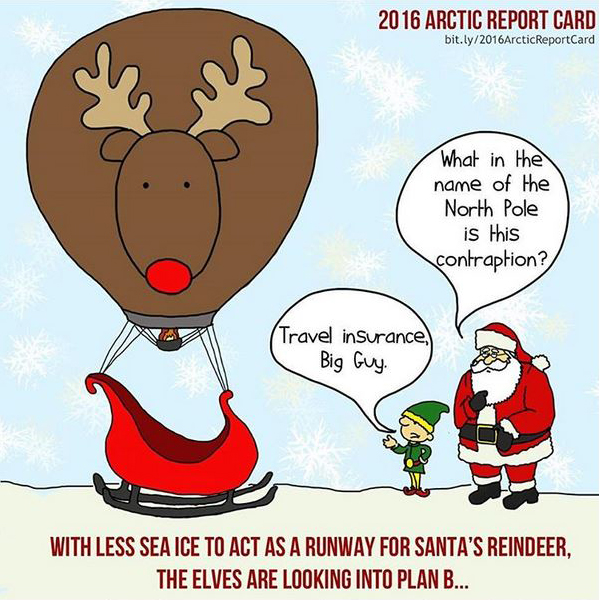
Unprecedented Arctic warmth in 2016 has triggered massive decline in sea ice, snow; warmer temperatures has also brought record-breaking delay to fall sea-ice freeze: http://bit.ly/2hK6H6G.
The findings were released via the 11-year-and-running National Oceanic and Atmospheric Administration (NOAA)-sponsored Arctic Report Card, a peer-reviewed report bringing together the work of 61 scientists from 11 nations who report on air, ocean, land and ecosystem changes. This report card is a key tool used around the world to track changes in the Arctic and how those changes may affect communities, businesses and people.
Check out a highlights video: https://youtu.be/G0rp6-BEur8.
View and download the report's images: http://ow.ly/Tkkl307lOOm.
Watch decades of Arctic sea ice get younger and thinner with this Climate.gov animation: http://ow.ly/UJym307lOVE.
And dig through all the details at www.arctic.noaa.gov/Report-Card.
In News from NOAA's New York Sea Grant ...
(1) FELLOWSHIPS >>> Graduate and/or postgraduates can apply for fellowships including: NOAA Coastal Management; Great Lakes Commission – Sea Grant; Two from National Marine Fisheries Service – Sea Grant; and the Knauss Marine Policy. Deadlines, which are in January and February, vary, with details available at www.nyseagrant.org/proposals.
(2) IT'S THE LAW >>> As of November 1st (and through May 1st) boaters, canoeists, kayakers, anglers and hunters who enjoy being on the water be aware that New York State law requires anyone in a boat that is less than 21 feet long on New York waters to wear a Coast Guard-approved flotation device: https://seagrant.sunysb.edu/articles/r/2695.
(3) A CHANGING OCEAN >>> $800K in new NOAA Sea Grant studies from Maine to New York will help investigators gain a better understanding of the effects ocean changes have the U.S. Northeast's marine life: https://seagrant.sunysb.edu/articles/r/2686. NYSG's research projects were also featured in Stony Brook University's e-newsletter, Happenings: https://seagrant.sunysb.edu/articles/r/2689.
(4) NEW SPECIALISTS, OPPORTUNITIES >>> We've just released information on how to apply to be our new full-time Great Lakes Coastal Processes Specialist. Application review will commence on February 13, 2017 for this position, which will be located at either SUNY Oswego or Cornell Cooperative Extension of Wayne County in Newark, NY.
Also, we're in the process of hiring a new full-time Great Lakes Fisheries and Ecosystem Health Specialist. Stay tuned for an announcement in January 2017 for this position, which will be at SUNY Oswego.
In the meantime, you can see more on these topics at, respectively, www.nyseagrant.org/glsportfish and www.nyseagrant.org/glcoastal.
(5) SEA GRANT AT 50 >>> We continue our commemoration of "SeaGrant50," the year-long anniversary campaign, by featuring some related coastal effort milestones - both statewide and nationally - on our blog, www.nyseagrant.org/blog.
(6) E-NEWS >>> Check out an archive of our newsletter, NY Coastlines / Currents, the latest of which was e-distributed this past summer: www.nyseagrant.org/nycoastlines. While you're there, you can also sign up (if you haven't already done so) to receive our next issue, slated for release in mid-January 2017.
Top 12 Trending News Stories from NOAA ...

(1) WHITE CHRISTMAS? >>> Where does weather history say you should be to have the best chance of seeing a white Christmas? Check out NOAA's map to see the climatological probability of at least 1 inch of snow being on the ground on December 25 in the contiguous United States: http://ow.ly/ZnQO307lQ1Q.
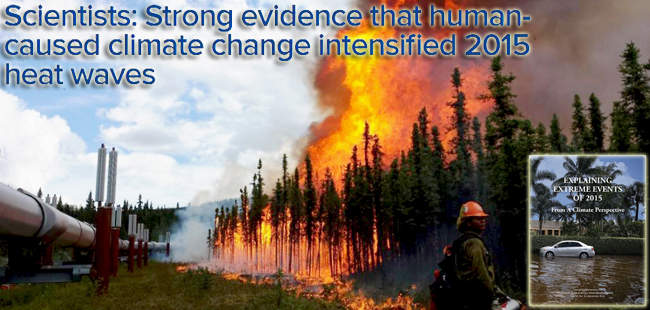
(2) CLIMATE AND HUMANS >>> In a new study out in mid-December, 116 scientists from 18 countries found that human-caused climate change increased the probability and severity of many extreme events that occurred around the globe in 2015. Scientists found that human activities -- such as greenhouse gas emissions and land use -- influenced specific extreme weather and climate events last year, including heat waves, drought, humidity, heavy rainfall, tropical cyclones, high tide flooding, Arctic sea ice extent and even the increased amount of sunshine in Great Britain: http://bit.ly/2hyICTH.
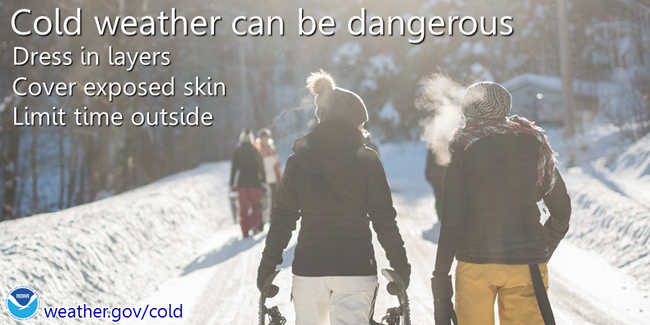
(3) WINTER SAFETY >>> December 21st was the officially the first day of winter on the calendar in the Northern Hemisphere, But for meteorologists and climatologists, the season began over 20 days ago. Learn more about the differences between the astronomical and meteorological seasons. http://ow.ly/zkfd307lSSO.
Cold weather can be life-threatening. If you can’t avoid being outside, NOAA's National Weather Service reminds you to follow these 3 steps and tell someone where you’re going: www.weather.gov/wrn/winter_safety, www.weather.gov/cold.
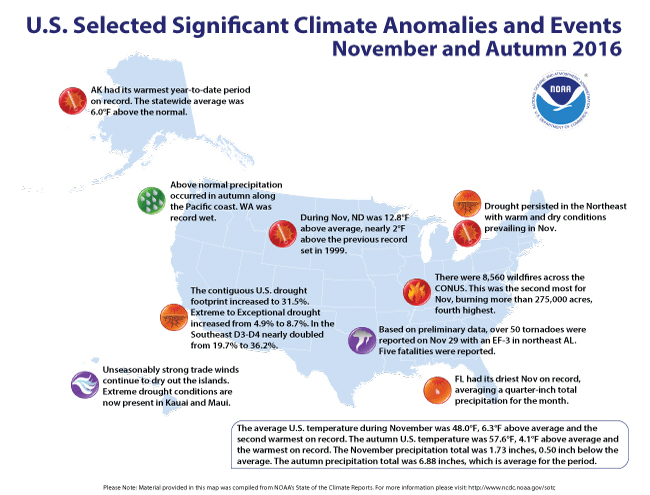
U.S. had its warmest autumn and 2nd warmest November on record. Credit: NOAA.
(4) GLOBAL & U.S. CLIMATE >>> According to the November 2016 Global Climate Report, the global temperature over land and ocean surfaces was the fifth highest on record for the month of November: http://ow.ly/GUok307lRpS.
The January–November 2016 temperature across global land and ocean surfaces was 1.69°F above the 20th century average of 57.2°F. This was the highest for January–November in the 1880–2016 record, surpassing the previous record set in 2015 by 0.13°F. See the report for how monthly global temperature departures from average so far in 2016 compare to the seven warmest years on record in the November 2016.
In the U.S., temperatures were above average across nearly the entire nation during autumn. Eight states were record warm and 27 additional states had an average autumn temperature that was either second or third warmest on record. The November 2016 U.S. State of the Climate Report, released by NOAA's National Centers for Environmental Information - Climate, has more on these and other climate conditions: http://ow.ly/itgU307lRtN.
(5) BRRRRR >>> Get the facts on the Polar Vortex straight from NOAA National Weather Service meteorologists: http://ow.ly/VtPk307lRK1.
(6) U.S. DROUGHT >>> According to the December 13th U.S. Drought Monitor, moderate to exceptional drought covers 29.8% of the contiguous United States, a decrease from last week’s 30.4%. The worst drought categories (extreme to exceptional drought) also decreased from 5.3% last week to 5.0%: http://ow.ly/Lc7y307lT70.
(7) TURN DOWN THE VOLUME >>> The ocean is loud ... and getting louder. During a live NOAA-hosted Reddit Science "Ask Us Anything" chat, scientists discussed the topic of ocean noise and what's being done to lessen the impacts on marine life: https://redd.it/5h6skp, http://go.usa.gov/x8PDR.
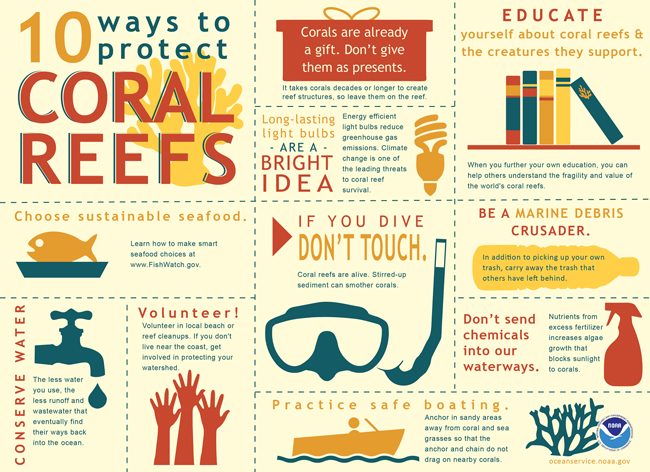
Coral reefs play a vital role in sustaining the health of our oceans and our economy. NOAA is working to increase understanding of the causes of reef decline. Credit: NOAA.
(8) PROTECT THE REEFS >>> With early December marking NOAA's annual Corrals Week, we're reminded that even if you live far from coral reefs, you can still have a big impact on reef health and conservation: http://ow.ly/obTX307lTuN, http://ow.ly/Ek7Y307lTyQ.
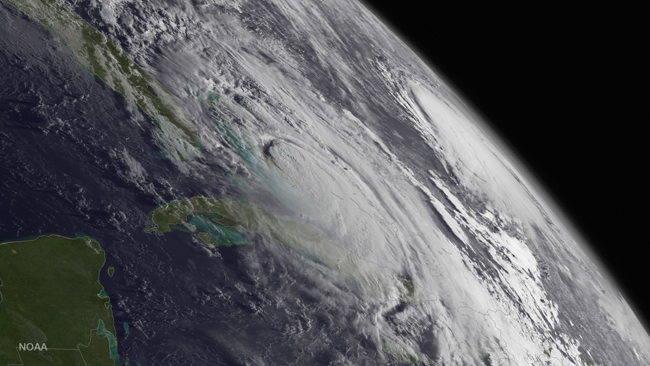
This incredible image is from NOAA's GOES-West satellite on October 6, 2016 and shows Hurricane Matthew as it approaches Florida with Nicole lurking farther east. Credit: NOAA.
(9) LAST SEASON'S HURRICANES >>> In mid-December, NOAA Satellites posted a comprehensive summary of the 2016 Atlantic hurricane season, which was deemed "above normal" and featured 15 named storms, including seven hurricanes — Alex, Earl, Gaston, Hermine, Matthew, Nicole, and Otto. Three of these storms, Gaston, Matthew and Nicole, were categorized as major hurricanes: http://arcg.is/2gLGqEi.
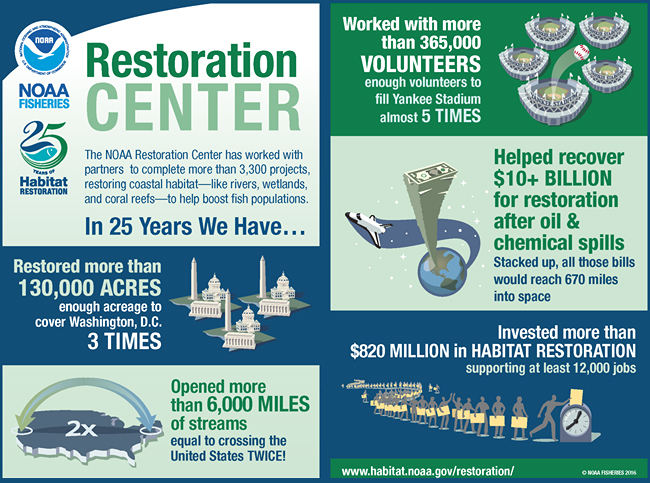
(10) RESTORE >>> In the past 25 years, NOAA's Restoration Center and its partners have completed over 3,300 projects restoring coastal habitat - like rivers, wetlands and coral reefs - to boost fish populations: http://ow.ly/6wkx307lTTO.
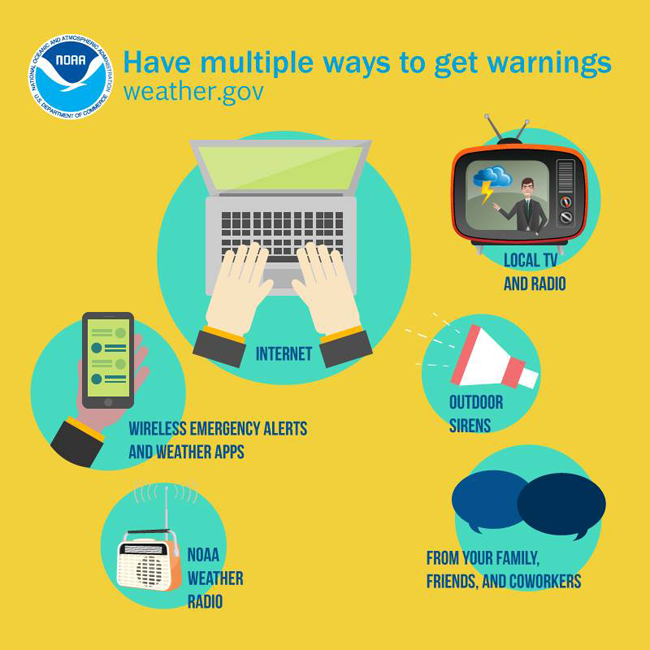
(11) HEED THE WARNINGS >>> As NOAA's U.S. National Weather Service reminds, there are many ways you can receive weather warnings. Check www.weather.gov for what you can expect today.
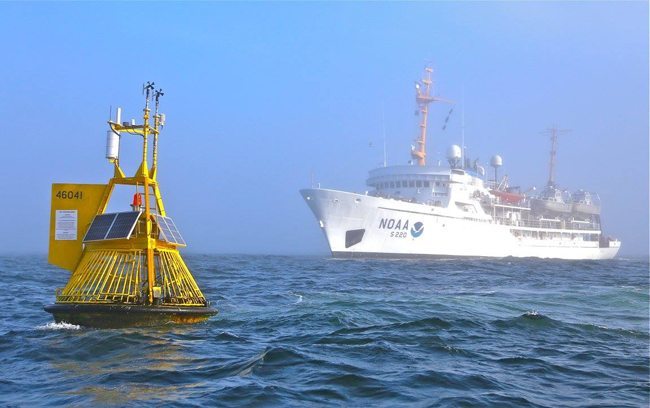
Scientists aboard NOAA Ship Fairweather sampled ocean waters and marine life to analyze how they may be affected by ocean acidification during the 2013 West Coast cruise. Credit: NOAA.
(12) OCEAN ACIDIFICATION >>> For the first time, NOAA and partner scientists have connected the concentration of human-caused carbon dioxide in waters off the U.S. Pacific coast to the dissolving of shells of microscopic marine sea snails called pteropods. http://go.usa.gov/x8Xk5.
The global ocean has soaked up one-third of human-caused CO2 emissions since the start of the Industrial Era. While this reduces the amount of this greenhouse gas in the atmosphere, it comes at a cost to the ocean. CO2 absorbed by seawater increases its acidity, reducing carbonate ions, which are building blocks used by shellfish to grow their shells.
---
On www.nyseagrant.org ...
- Our "Trending Topics," such as climate change and green tips for coastal living, via a section on our homepage, www.nyseagrant.org.
- For the latest news from NYSG, check out our 'Currents' section, www.nyseagrant.org/currents, as well as our 'by-topic' archives, www.nyseagrant.org/currentsarchive.
- To keep tabs on all of NYSG's coastal science news, follow us on Facebook (www.facebook.com/nyseagrant), Twitter (www.twitter.com/nyseagrant) and YouTube (www.youtube.com/nyseagrant); Subscribe to our free news feeds (click the orange & white icon in the "Follow Us" navigation bar at www.nyseagrant.org); Sign up for our e-list in a few quick clicks at www.nyseagrant.org/nycoastlines. Our flagship publication, NY Coastlines / Currents, is published 1-2 times a year.
|